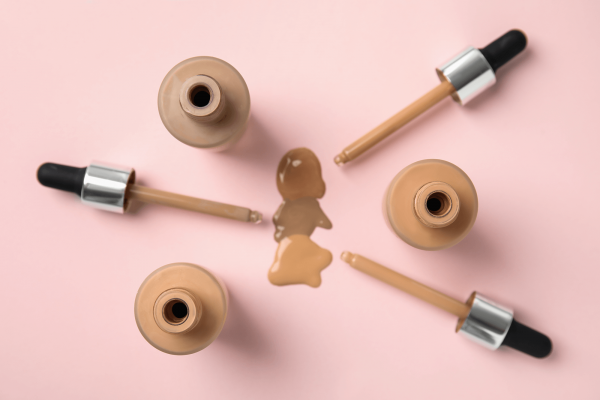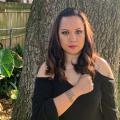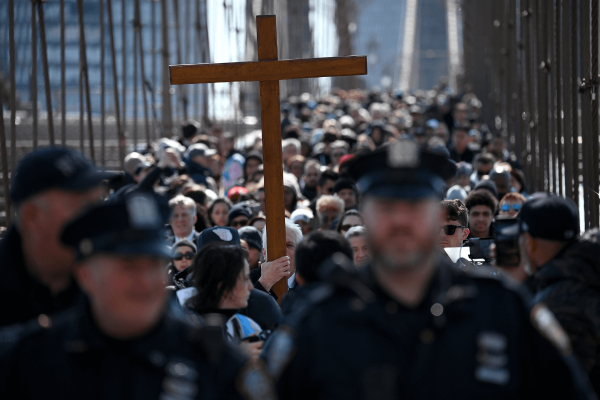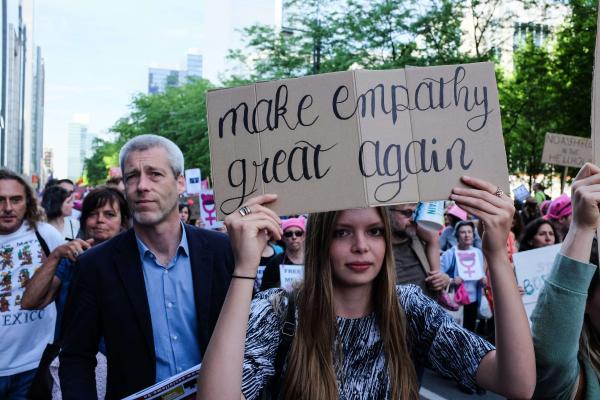MY EXPERIENCE BEING color-shamed began when I was 5 years old and still living in the Philippines. My mom and aunts often told me that I could be mistaken for “the maid’s daughter,” due to my darker brown skin. Even at a young age, I understood it was intended as an insult.
As I grew up, billboards, films, television shows, and magazines bombarded me with images of white Americans and Filipinas with white facial features. Mestiza Filipina models and actresses—celebrities admired by young girls like me—advertised skin-whitening products.
Color-shaming by other Filipinas continued after I moved to the United States at age 7. My mom, titas (aunts or older women), and lolas (grandmothers or elderly women) told me to “stay away from the sun” and “try not to get so dark.” They told me I would look even prettier if I had lighter skin.
This skin color hierarchy didn’t come just from other Filipinos. In junior high a boy I liked told my friend I was “too brown for his taste.” A white woman once asked my white boyfriend what he saw in me, a “brown chick.” When I was 27, I walked into a restaurant and a white lady told her friends, “Let’s get out of here. It’s getting too brown up in here.” Others have suggested I marry a white man instead of a Filipino so I can make “pretty light-skinned babies.” Not to mention the mostly white faces of U.S. mainstream media.
Beauty Erasers
IN Doing Christian Ethics from the Margins, theologian Miguel A. De La Torre describes how dominant cultures view oppressed peoples as objects. But the problem runs deeper, explains De La Torre: “Persons viewed as objects accept their oppressors’ worldview as their own,” he writes, and “often feel compelled to behave and act according to the way in which they have been constructed by others.”
While colorist and racist comments pained me deeply, it had not occurred to me how I had internalized these messages of brown-skin inferiority. And yet, I had: As a teen I used toxic chemicals to bleach my hair blonde, wore blue contacts, pinched my nose every night to form it thinner, and purchased shades of foundation lighter than my own skin tone. More recently, I highlighted my hair light brown and bought contour makeup to give the illusion of having white facial features: a thinner and pointier nose, higher cheekbones, a more chiseled bone structure. The more I looked like the white models and actresses on my Pinterest page, the more confident I felt.
If someone had asked me why I dyed my hair or wore so much makeup, I would have said it was my personal preference; I would not have attributed it to the constant stream of images promoting white beauty standards in the U.S and the Philippines. I did not realize I was conditioned to want to look white.
One day, my theology professor assigned a reflection paper in which I had to look more closely into my culture and ancestry. Since I knew close to nothing about my history, I talked to my aunt, who encouraged me to read about our spiritual ancestors, including babaylans (Indigenous spiritual shamans and warriors) and the Itneg (people from the northern Philippines—my paternal ancestors). Once I began researching, I noticed they looked a lot like my natural self. It had never occurred to me that the light-skinned Filipinas in fashion magazines, movies, and television shows looked nothing like the people walking the streets of Manila. Unlike Filipino “media representatives,” most Filipinos have darker brown skin, dark brown hair, dark brown eyes, flat and wide noses, and almond or round-shaped eyes.
I began searching the internet for Filipinas with brown skin. I discovered models and actresses such as Asia Jackson using the hashtag #MagandangMorenx, or “pretty brown-skinned person,” to fight Filipino obsession with white skin.
Then I looked in the mirror, at my own dyed hair and the light beige highlight I’d brushed on the bridge of my nose, and questioned why I had not embraced my own natural beauty. What I thought was beautification was actually a form of erasing myself—replacing my dark brown hair, my brown skin, my brown eyes, and my flat nose with white features. Over time, I recognized that this was both a theological and an ethical issue: valuing whiteness over brownness where God meant for us to see ourselves as equals.
Ancestral Beauty Advice
I WANTED TO find a way to decolonize myself, to feel fully human as a Filipina American with darker brown skin, rather than a lesser version of another.
I started with decolonizing my skin. First, I threw away all my lighter foundation and contour makeup. I basked in the sun more often. I looked at more pictures of Indigenous Filipinos, admiring their skin tones so I could be more confident in mine. And I researched the ways my ancestors cared for and understood their own skin.
There is a misconception that Filipinos with darker skin work outside and are therefore lower class. To this day, some Filipinos use an umbrella to keep the sun away, cover themselves with skin-lightening cream, or visit the doctor to get regular skin-lightening injections. But Indigenous people of the Philippines celebrate their skin through ceremonies and rituals; darkness is valued as spiritual enhancement. Indigenous people gain spiritual energy from the sun, hand-tap ancestral tattoos to show their knowledge and wisdom, and adorn themselves with colorful, beaded clothing.
In Way of the Ancient Healer, Virgil Mayor Apostol includes many pictures of Indigenous people of the Philippines. Flipping through these pages was cathartic; instead of trying to look like a white American woman, I saw positive ways to enhance my own physical attributes. I noticed how these pictures empowered me, both in a spiritual sense and in a way that made me feel comfortable in my own skin.
I also found a book called Filipino Tattoos: Ancient to Modern, by Lane Wilcken. I learned that before Spanish colonizers arrived in the 1500s—and subsequently tortured people into Catholicism, enforced white superiority, and renamed the islands “the Philippines” to honor Spain’s King Philip II—part of the archipelago was called Las Islas de los Pintados, or “The Islands of the Painted Ones.” Pre-colonization, these native “Filipinos” were covered with batok , head-to-toe tattoos signifying beauty, identity, and ancestral heritage. Symbols on the left arm signified one’s maternal history; symbols on the right, paternal history. Each tattooed symbol or pattern had a deep meaning to the people who wore it, often accompanied by a story passed down through the generations.
In Laudato Sí, Pope Francis asks what kind of world we want to leave to our children. “This question not only concerns the environment in isolation,” he writes. “When we ask ourselves what kind of world we want to leave behind, we think in the first place of its general direction, its meaning and its values. ... What is the purpose of our life in this world? Why are we here? What is the goal of our work and all our efforts?” Batok was a way for ancestors to answer these questions, an example of cultural empowerment where people celebrated their bodies through sharing art, history, and wisdom—specific to their tribe and lineage—to help guide future generations. Batok remains a symbol of inter- and intragenerational solidarity, binding family members together.
Not long after, Wilcken—one of five ancient Filipino tattoo practitioners in the world—hand-tapped symbols on my arm that were likely on my Indigenous ancestors from Bangued, Abra, in the northern part of the Philippines. It was another step toward my decolonization, another way to boost my self-esteem without erasing parts of myself.
Internalized Oppression Fades Slowly
IN THE LATE 19th century, the U.S. colonized the Philippines and continued enforcing white superiority. In 1899, Rudyard Kipling called Filipinos “the white man’s burden.” That same year The Boston Sunday Globe published Filipino blackface on the front page with the headline: “Expansion, Before and After.”
After centuries of oppression, we have internalized this sense of our own inferiority to white people. To this day, some people with darker skin feel worthless. Globally, skin whitening is projected to grow to a $31.2 billion industry by 2024—and Filipinas are some of the industry’s most loyal buyers.
In Our Cry for Life, theologian María Pilar Aquino writes that “one of the most important aspects of the contribution of women to liberation theology is the principle that liberation is not total if it does not also emancipate women from their repressive attitude toward themselves.” For me, this means eradicating the feelings of self-hatred and shame that I absorbed as a Filipina.
But overcoming internalized colorism is an ongoing process. I still find myself deviating from what I learned about Indigenous beauty and instead emulating those in my current surroundings. After I left sunny Southern California, a fellow Filipina commented on how much lighter skinned I’d become, and for a split second I considered it a compliment. And even after days of trying to change my Pinterest algorithm to show more pictures of Filipinas with darker brown skin, I found myself pinning pictures of light-skinned women such as the 2019 Miss Universe, Filipina Catriona Gray.
Because I am still immersed in a culture where white beauty standards are the default, I am constantly trying to be purposeful in what images I look at, what movies I see, and what books I read. I’ve tried to “fix” the issue by taking a break from social media altogether. Nevertheless, my conditioned, internalized-colorism self still lurks in my subconscious. Often, it feels easier to follow U.S. beauty norms than to find my own way. And it feels lonelier when the only other person I know who is on a similar journey lives thousands of miles away. Loving my true self is a battle.
Churches and Christians can help affirm and support people of color by facilitating uncomfortable conversations about colorism and internalized colorism—something many people of color experience (and are exhausted by) daily but is hardly talked about in Christian spaces. However, it’s an issue Christians cannot ignore. For many people of color, being able to talk openly about colorism—in one-on-one settings, affinity groups, or larger conversations—is part of their healing process.
Furthermore, Christian communities can join the work of dismantling colorism by supporting artists of color. Deliberately seeking out books, movies, documentaries, magazines, and other media that feature people of color can help us with our careers, dreams, and visibility—and prove there is a demand for this work. And with research and careful attention to cultural sensitivity, churches can display our spiritual artwork, including works that acknowledge our Indigenous heritage and recognize spiritual leaders with darker skin.
For us to authentically understand the gospel, marginalized people and cultures need to be visible, need to be heard in our churches. This reaffirms our dignity as people with black or brown skin and reclaims our wholeness as we meet more deeply our God of many colors, shades, and skin tones.
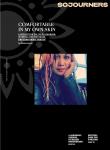
Got something to say about what you're reading? We value your feedback!
